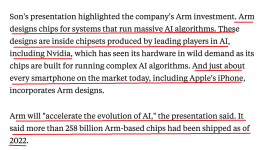Lots of Brainchip shareholders are really hurting, maybe you should have sold out if you are that convinced it's all doom and gloom.
It's not my job or the companies to calm your nerves, if you are so driven by the share price that you have entered the panic mode, well sell
your shares and move away from this forum...all I do know is, as of the start of this week our staff have never been more engaged with
customers (potential or otherwise) in our history, that our founder from Perth, Peter, is currently over in the US helping Anil and the team
complete the final process of AKD 2.0.
This indicates to me at least that, the release of AKD 2.0 to EAP's followed by the general public is fast approaching, while I'll personally
concede that this current period towards commercialization feels rather frustrating, it's better to get it right now, rather than later, we
(Brainchip) can't afford any major mistakes at this delicate time in our journey.
I have asked Sean a specific question to be addressed at the upcoming quarterly podcast update with Tony, if he doesn't address my
question, I'll let you know what it was after.
Have a great weekend back in Australia.
Tech




